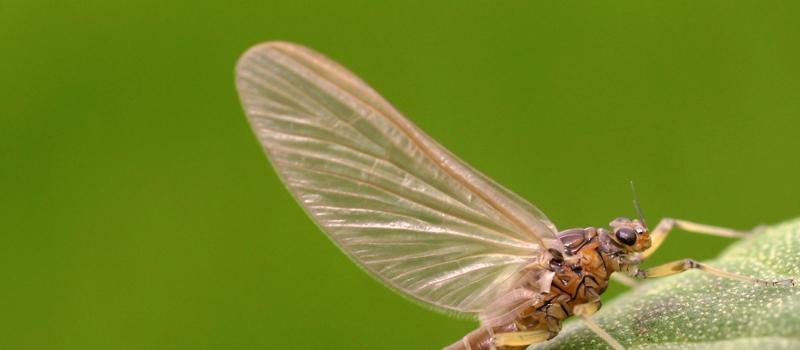The Difference Between Mayflies and Mosquitoes
Posted by Mosquito Squad
February 3, 2022

The sun is shining brighter, temperatures are rising, and many of us are looking for ways to spend more time on, in, or near the water. But this also means we will be sharing our claimed piece of aquatic real estate with mosquitoes and a slew of other bugs.
One such bug - the mayfly, which is often mistaken for a mosquito, is about to make its seasonal debut. Mayflies have been around for thousands of years, which is quite a feat considering their adult lifespan only lasts about a day. They can be found lounging by freshwater sources across the world and throughout North America. Their life cycle is both fascinating and fleeting. It begins with males swarming above bodies of water to attract and mate with the females. In some instances, these swarms are so large they can be seen on Doppler radar.
After copulating, the male will fly to nearby land and die while the female will descend to the water’s surface to lay her eggs before also dying. Females can produce less than 50 or up to 10,000 eggs, which either settle on the waterbed or stick to plants and stones along the way. From there, the eggs hatch in about two weeks, producing a nymph that endures a growth stage lasting between two weeks and two years. Once this growth is complete, the nymphal skin is shed, producing a winged form of the insect called the subimago. The subimago emerges from the water to find a resting place where a final shedding occurs, producing the imago or fully formed adult mayfly.
Their general appearance, summer-time presence, and knack for hovering around porch lights lend to the mayfly being mistaken for the mosquito. However, the mayfly is more closely related to the dragonfly. Compared to the mosquito, the mayfly has larger, upward slanting wings, and lacks both a mouth and a digestive tract. This feature (or lack thereof) creates the key difference between mayflies and mosquitoes: mayflies do not bite or sting, nor do they feed on homes, furnishings, or food.
Their presence may be annoying to humans, but mayflies play an important role in the ecosystem. They serve as a delectable food source for fish, birds, and other wildlife. And while their swarms are an eerie sight, scientists indicate that swarms of mayflies are a sign of a healthy body of water. If you’re vacationing at the lake within the next few weeks, don’t let mayflies put a damper on your outing. Chances are, they’ll be gone in a day.
When it comes to flying insects, mayflies are some of the “good guys.” We can help you fight off pests that pose a larger threat. Contact your local Mosquito Squad today!
